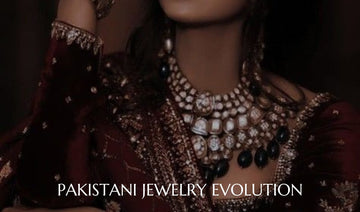Introduction:
Pakistani fashion jewelry, known for its intricate designs and deep cultural significance, boasts a rich history that has spanned centuries. This article will explore the evolution of Pakistani fashion jewelry, tracing its journey from ancient traditions to contemporary styles. It highlights how this jewelry continues to captivate the hearts of people in Pakistan and around the world.Historical Origins:
The ancient civilizations of the Indus Valley, dating back to around 2500 BCE, serve as the origin for Pakistani jewelry. Artisans of that era crafted simple designs, using beads, stones, and metals like copper and bronze. These early artifacts set the foundation for the intricate designs and styles that evolved in the ensuing centuries.Influence of Various Dynasties:
Various dynasties, including the Persian, Afghan, and Mughal empires, have significantly influenced Pakistani jewelry design throughout history. Each era introduced its unique styles and techniques:- The Mughal Influence: Particularly, the Mughal era profoundly impacted Pakistani jewelry. The Mughals introduced intricate designs, precious stones, and the art of enameling (Meenakari).
- Regional Diversity: Pakistan's different regions developed their distinct jewelry styles. For example, Balochistan's tribal jewelry, known for its bold and rustic designs, stands in stark contrast to the delicate and ornate pieces traditionally found in Punjab and Sindh.





